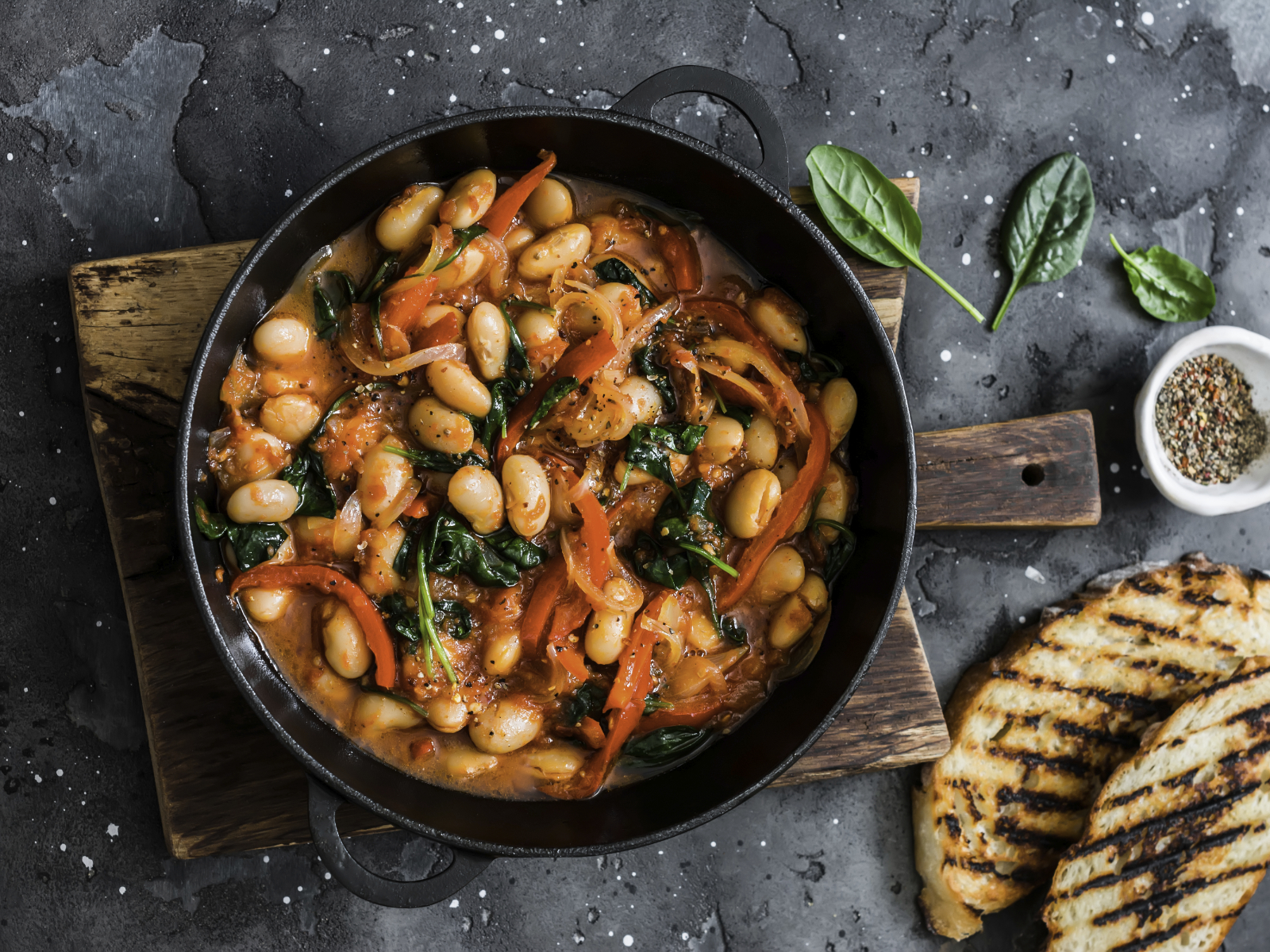Looking to eat more plant-based protein sources? You’re in good company. According to the International Food Information Council’s 2022 Food and Health survey, plant-based diets are the fourth most common eating pattern among Americans, with 12% of us striving to go veg. There are tons of benefits to a plant-forward lifestyle, including reduced risk of heart disease, potential prevention of type 2 diabetes, and healthier BMI.
If you’ve chosen to lean more heavily on plants, though, you may have questions about how to get adequate protein. As amazingly nutritious as plant foods may be, it’s a simple fact that, in general, they don’t contain as much protein as animal foods. But that doesn’t have to deter you from making plants the center of your plate! With the right choices, you can absolutely get the protein you need — which, for the record, is 0.8 grams per kilogram of body weight each day for sedentary adults.
There’s a whole world of colorful and delicious plant-based protein sources to choose from — so grab a fork and let’s dive in!
Related: Sign up to receive delicious recipes, expert advice, and shopping tips in your inbox!
1. Soy
8 grams in a 3 oz. of tofu, 18 grams in 1 cup of edamame, 8 grams in 1 cup of soy milk
We’d be remiss if we didn’t start our list with one of the highest protein plant foods around: soy. By choosing soy foods, you’ll get a substantial dose of the muscle-building macro in its “complete” form. Complete proteins are those that contain all nine essential amino acids the body can’t produce on its own.
The other selling point about soy? Its flexibility. This protein powder player can find its way into tofu or tempeh at dinnertime, soy milk on your breakfast cereal, or edamame at snack time.
2. Hemp seeds
9.5 grams in 3 tablespoons
Hemp seed powders are popular for their combination of plant-powered protein and healthy omega-3 fatty acids. But you don’t have to shell out the cash for a fancy powder to reap the benefits of hemp. For a plant-based protein boost in a smoothie, atop oatmeal, or in a yogurt parfait, simply toss in a serving of the seeds (which is a generous 3 tablespoons). You’ll snag nearly 10 grams of protein in the process.
3. Quinoa
8 grams in 1 cup
Fun fact: Contrary to popular belief, quinoa isn’t a grain. It’s technically a seed — but it definitely isn’t bird food. The nutty, fluffy choice is loaded with a surprisingly sizable amount of protein. In a single cup (the perfect amount for a pilaf side dish, a unique salad, or a quinoa breakfast porridge), you’ll find 8 grams.
You may have even heard quinoa referred to as a superfood. While no food is perfect, there’s justification for some of the hype around the South American seeds (which are often called pseudo grains, since they’re cooked and eaten like grains). Besides quinoa’s protein content, it serves up 5 grams of fiber and is a good source of iron, phosphorus, manganese, copper, folate, magnesium, and zinc.
4. Beans
19 grams in 1 cup of Great Northern beans, 15 grams in 1 cup of black beans, 18 grams in 1 cup of chickpeas
On a plant-based diet, beans are one of nature’s greatest gifts. They’re rich in fiber and complex carbs that prevent blood sugar spikes, harbor nutrients like calcium and iron, and are endlessly adaptable. There’s practically no meal or snack where beans can’t find a role to play. Pop them into tacos, soups, hummus, or a good old-fashioned dish of rice and beans. (Don’t miss our top tip for making canned beans taste way better.)
The question on every plant-based eater’s mind, though, is beans’ protein content. Ever wondered which ones are the highest? That honor is a neck-and-neck race between Great Northern beans, edamame, and chickpeas. Still, any type of bean will add substantially to your daily protein target.
5. Lentils
18 grams in 1 cup
Lentils are beans’ near relation in the realm of pulses (the edible seeds of plants in the legume family). It’s not surprising, then, that they also come pre-loaded with protein — around 18 grams per cooked cup. And while you have your choice of colors when it comes to lentils, there’s not a huge variation in protein content between black, brown, green, red, and yellow. You’re free to choose whichever color suits your culinary fancy!
Like beans, lentils also have plenty of heart-healthy, stick-to-your-ribs fiber (a whopping 16 grams per cooked cup). And they happen to be high in thiamin, iron, folate, vitamin B6, copper, manganese, and other micronutrients.
If you’re new to cooking with lentils — or if you’ve cooked them in the same ways for years on end — check out these five ways to turn them into healthy plant-based meals.
6. Nuts and nut butter
7 grams in 1 oz. of peanuts, 7 grams in 2 tablespoons of peanut butter
You don’t have to be on a plant-based diet to know the joys of a thick peanut butter and jelly sandwich or a crunchy handful of pistachios. Fortunately, these favorites have even more to offer besides appealing flavor and texture. Nuts and nut butter are good plant-based protein sources. (Trivia for nutrition buffs: A “good” source of protein is defined as a food that provides 10% to 19% of the Daily Value of 50 grams.)
Though you can’t go wrong with any nut, from almonds to walnuts, the humble peanut wins the title of the highest-protein choice.
Read next: 8 Easy Plant-Based Recipes That Are Packed With Protein
The post The 6 Best Plant-Based Protein Sources To Add to Your Diet appeared first on Clean Plates.

